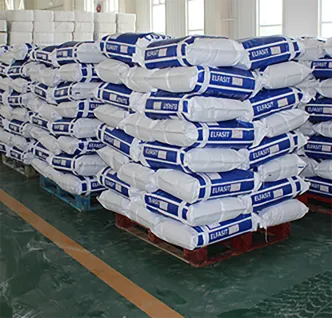
Dec . 12, 2024 04:06 Back to list
Exploring the Chemical Composition and Structure of Hydroxypropyl Methylcellulose
Understanding the Chemical Structure of Hydroxypropyl Methylcellulose (HPMC)
Hydroxypropyl methylcellulose (HPMC) is a semi-synthetic polymer widely utilized in various industries, including pharmaceuticals, food, and cosmetics. Its versatility and unique properties stem from its chemical structure, which influences its solubility and functional characteristics. Understanding the chemical structure of HPMC is essential for grasping its functional applications.
HPMC is a derivative of cellulose, a natural polymer sourced from plant cell walls. The primary structure of cellulose consists of long-chain β-(1→4)-linked D-glucose units. To produce HPMC, cellulose undergoes a series of chemical modifications where hydroxyl groups on the glucose units are substituted with hydroxypropyl and methyl groups. This modification significantly alters the polymer’s properties.
The chemical structure of HPMC can be represented as follows
1. Backbone Structure The fundamental backbone of HPMC is formed by β-D-glucose units, connected via β-(1→4) glycosidic bonds. This backbone is responsible for maintaining the structural integrity of HPMC, similar to that of natural cellulose.
2. Hydroxypropyl Substitution The hydroxypropyl groups are introduced during the etherification process. This involves treating cellulose with propylene oxide in the presence of a base. Depending on the degree of substitution, hydroxypropyl groups can be attached to the glucose units. This substitution affects the hydrophilicity of HPMC, enhancing its solubility in water and allowing it to form gels.
chemical structure of hpmc

3. Methyl Substitution The methylation process further modifies HPMC's solubility and viscosity. By reacting cellulose with methyl chloride or dimethyl sulfate, methyl groups are introduced onto the hydroxyl groups of glucose. The presence of methyl groups reduces the hydrogen bonding capacity of the cellulose backbone, leading to increased solubility in both cold and hot water.
The degree of substitution (DS) is a critical parameter that dictates the properties of HPMC. The DS refers to the average number of hydroxyl groups that have been replaced by hydroxypropyl or methyl groups. For instance, a high degree of hydroxypropyl substitution will result in a more hydrophilic polymer, which is crucial for applications requiring gel formation or thickening. Conversely, if the methyl substitution predominates, it typically enhances the hydrophobic character of the polymer.
The specific ratios of hydroxypropyl to methyl substitutions also influence the gelation temperature of HPMC, which can vary depending on the manufacturing process and the desired application. These variations are significant in pharmaceuticals where HPMC is commonly used as a thickening agent, film-former, and sustained-release agent in drug formulations.
In the food industry, HPMC serves as a food additive that offers texture and stability to various products. Its emulsifying properties help in maintaining the consistency of sauces, dressings, and ice creams. Additionally, HPMC's ability to retain moisture makes it a popular ingredient in gluten-free baked goods, where it mimics the texture that gluten would provide.
In cosmetics, HPMC is leveraged for its ability to provide viscosity and stability to creams, lotions, and gels. Its non-toxic and biodegradable nature gives it an edge over synthetic polymers in personal care formulations, appealing to environmentally conscious consumers.
In conclusion, the chemical structure of hydroxypropyl methylcellulose is vital to its extensive applications across multiple industries. Its cellulose-derived backbone presents a stable framework, while the strategic substitution of hydroxypropyl and methyl groups imparts unique properties conducive to various functional requirements. As research continues to explore the potential applications and modifications of HPMC, its significance in science and industry will undoubtedly grow. Understanding the complex interplay between its chemical structure and resultant properties is paramount for scientists, formulators, and engineers alike in harnessing the full potential of this remarkable polymer.
-
Versatile Hpmc Uses in Different Industries
NewsJun.19,2025
-
Redispersible Powder's Role in Enhancing Durability of Construction Products
NewsJun.19,2025
-
Hydroxyethyl Cellulose Applications Driving Green Industrial Processes
NewsJun.19,2025
-
Exploring Different Redispersible Polymer Powder
NewsJun.19,2025
-
Choosing the Right Mortar Bonding Agent
NewsJun.19,2025
-
Applications and Significance of China Hpmc in Modern Industries
NewsJun.19,2025







